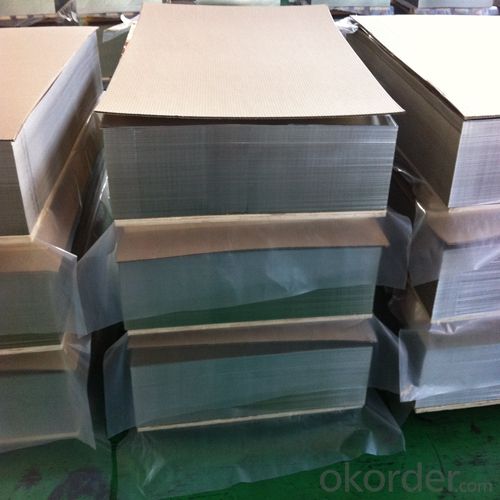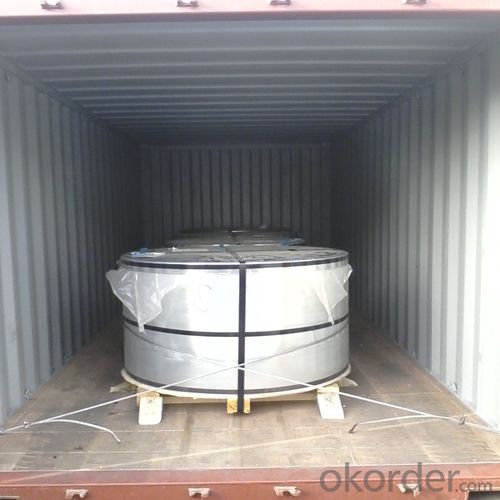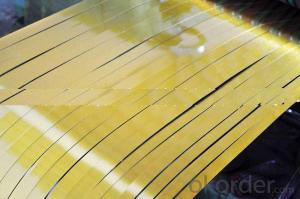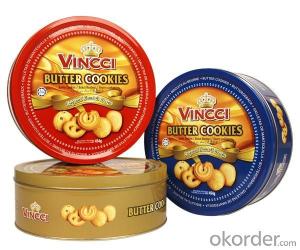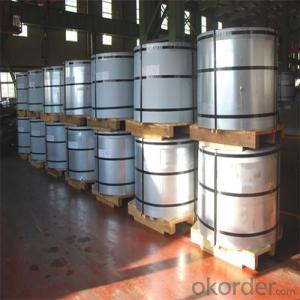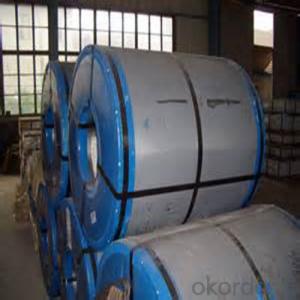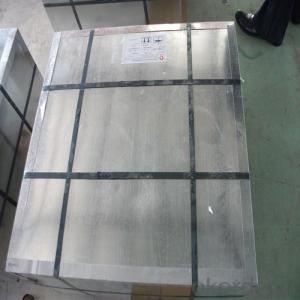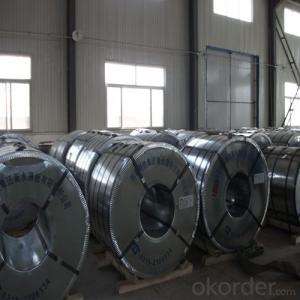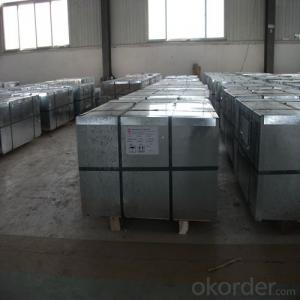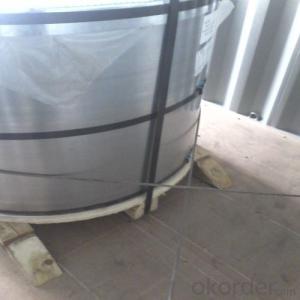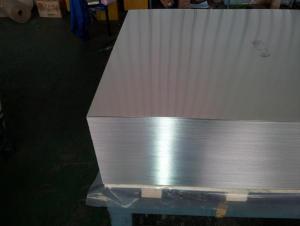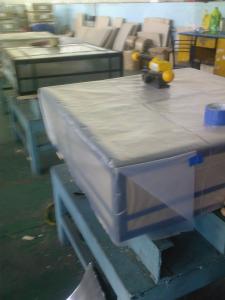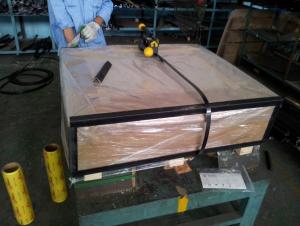Electrolytic Tinplate Coils of High Quality for Metal Container 0.198mm
- Loading Port:
- Shanghai
- Payment Terms:
- TT OR LC
- Min Order Qty:
- 50 m.t.
- Supply Capability:
- 15000 m.t./month
OKorder Service Pledge
OKorder Financial Service
You Might Also Like
1.Structure of Electrolytic Tinplate Coils of High Quality for Metal Container 0.198mm Description
Tinplate is widely used for making all types of containers such as food cans, beverage cans, and artistic cans, tea cans, painting cans, chemical package cans and dry food package cans, metal printing etc. Its applications are not limited to containers; recently, tinplate has also been used for making electrical machinery parts and many other products.
2.Main Features of the Electrolytic Tinplate Coils of High Quality for Metal Container 0.198mm
Electrolytic Tinplate undoubtedly enjoys the pride of place as a packaging medium especially for food. It owes its unique position to its "nine layer sandwich structure", each of which contributes to its eminence as a packing material. The steel base of electrolytic tinplate provides the necessary strength and formability for can fabrication. The tin-iron alloy layer provides the bond between the steel and free tin layer. The free tin layer is not only responsible for the attractive bright finish and ease of solderability but is also non-toxic- a factor of vital importance in food packaging!
3.Electrolytic Tinplate Coils of High Quality for Metal Container 0.198mm Images
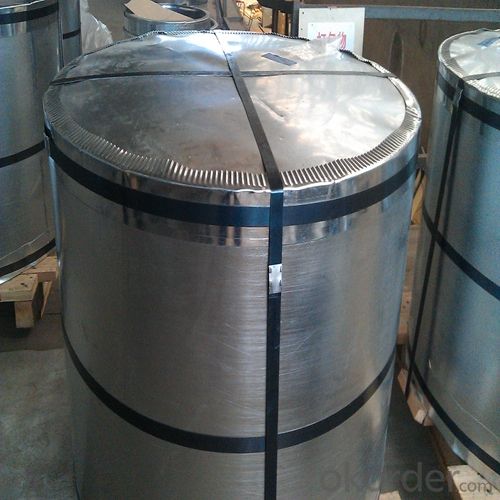
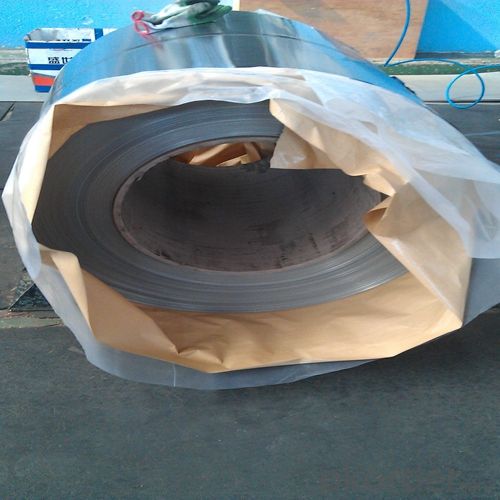
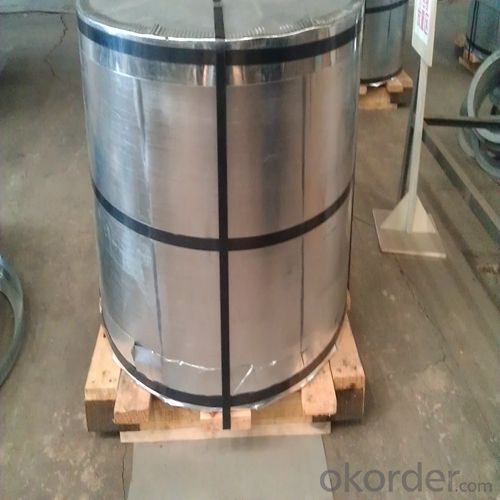
4.Electrolytic Tinplate Coils of High Quality for Metal Container 0.198mm Specification
Standard:BS EN 10202
Material: SPCC
Thickness:0.198mm
Width:736mm
Temper: T2
Annealing: BA
Coil Inner Diameter: 508mm
Weight: 6-10 tons/coil
Passivation:311
Oil: DOS
Surface: silver
5.FAQ of Electrolytic Tinplate Coils of High Quality for Metal Container 0.198mm
- What is your producation capacity per month?
We can produce about 25,000tons
- What is tinning and how does it work?
Tinning is the process of thinly coating sheets of wrought iron or steel with tin, and the resulting product is known as tinplate. It is most often used to prevent rust.
- Do you only have prime quality tinplate?
We can supply both prime and second quality tinplate.
- Q: What are the advantages of using tinplate in packaging?
- Tinplate offers several advantages in packaging. Firstly, it provides excellent protection against corrosion, ensuring the contents remain safe and unaffected. Additionally, tinplate is lightweight yet durable, making it easy to transport and handle without compromising strength. It is also highly malleable, allowing for intricate designs and shapes, enhancing visual appeal. Furthermore, tinplate is eco-friendly as it is recyclable and can be reused multiple times, promoting sustainability in packaging solutions.
- Q: What are the challenges faced in the recycling of tinplate?
- One of the main challenges in the recycling of tinplate is the separation of tin from steel. Tin is a valuable material and it is important to recover it efficiently. However, the process of separating tin from steel can be complicated and time-consuming. Additionally, the presence of other contaminants in tinplate, such as paint or other coatings, can further complicate the recycling process. Another challenge is the collection and sorting of tinplate waste, as it often ends up mixed with other materials in the general waste stream. This makes it harder to recover and recycle tinplate efficiently. Overall, the challenges in the recycling of tinplate involve the efficient separation of tin from steel and the collection and sorting of tinplate waste.
- Q: How does tinplate contribute to the performance of ammunition?
- Tinplate contributes to the performance of ammunition in several ways. Firstly, tinplate acts as a barrier between the ammunition's metallic components and the environment, preventing corrosion and ensuring the ammunition remains functional over time. Additionally, the smooth surface of tinplate reduces friction and enhances the flow of ammunition through firearms, improving the overall reliability and performance of the weapon. Furthermore, tinplate's strength and durability provide necessary protection to the ammunition during handling, transportation, and storage, ensuring it remains intact and ready for use when needed.
- Q: How does tinplate handle exposure to gases and odors?
- Tinplate is highly resistant to gases and odors, making it an excellent choice for packaging materials. It provides a reliable barrier that prevents the transfer of gases and odors, ensuring the preservation and protection of the contents.
- Q: What are the benefits of using tinplate for electrical components?
- Using tinplate for electrical components offers several benefits. Firstly, tinplate is corrosion-resistant, which helps to protect the components from moisture and other environmental factors that could lead to damage or malfunction. Secondly, tinplate has excellent conductivity, ensuring efficient and effective electrical flow within the components. Additionally, tinplate is a lightweight and durable material, making it ideal for use in electrical applications. Furthermore, tinplate is easily recyclable, making it a sustainable choice for manufacturers. Overall, utilizing tinplate for electrical components enhances their performance, longevity, and environmental sustainability.
- Q: What are the advantages of using tinplate for shipping containers?
- There are several advantages of using tinplate for shipping containers. Firstly, tinplate is highly durable and provides excellent protection against corrosion and oxidation, ensuring the contents of the container remain safe during transit. Secondly, tinplate is lightweight yet strong, allowing for easier handling and reducing transportation costs. Additionally, tinplate is easily recyclable, making it a sustainable choice for shipping containers. Lastly, tinplate offers a smooth surface which is conducive to branding and can be easily customized with logos and designs, enhancing the overall aesthetic appeal of the container.
- Q: What are the different testing methods for tinplate packaging?
- Some of the different testing methods for tinplate packaging include visual inspection, leak testing, drop testing, compression testing, and corrosion resistance testing.
- Q: Can tinplate be used for packaging alcoholic beverages?
- Yes, tinplate can be used for packaging alcoholic beverages. Tinplate is a commonly used material for beverage cans, including alcoholic beverages, due to its durability, resistance to corrosion, and ability to preserve the quality and flavor of the product.
- Q: Can tinplate be used for non-packaging applications?
- Yes, tinplate can be used for non-packaging applications. Tinplate's properties such as durability, corrosion resistance, and versatility make it suitable for various non-packaging uses such as automotive parts, electrical components, construction materials, and more.
- Q: How does tinplate perform in terms of durability and longevity?
- Tinplate is highly durable and long-lasting due to its corrosion-resistant properties. It can withstand harsh environmental conditions and is resistant to rust and oxidation, making it ideal for various applications where durability is crucial. Additionally, tinplate's longevity is further enhanced through proper coating and maintenance, ensuring its longevity even in demanding environments.
Send your message to us
Electrolytic Tinplate Coils of High Quality for Metal Container 0.198mm
- Loading Port:
- Shanghai
- Payment Terms:
- TT OR LC
- Min Order Qty:
- 50 m.t.
- Supply Capability:
- 15000 m.t./month
OKorder Service Pledge
OKorder Financial Service
Similar products
Hot products
Hot Searches
Related keywords




